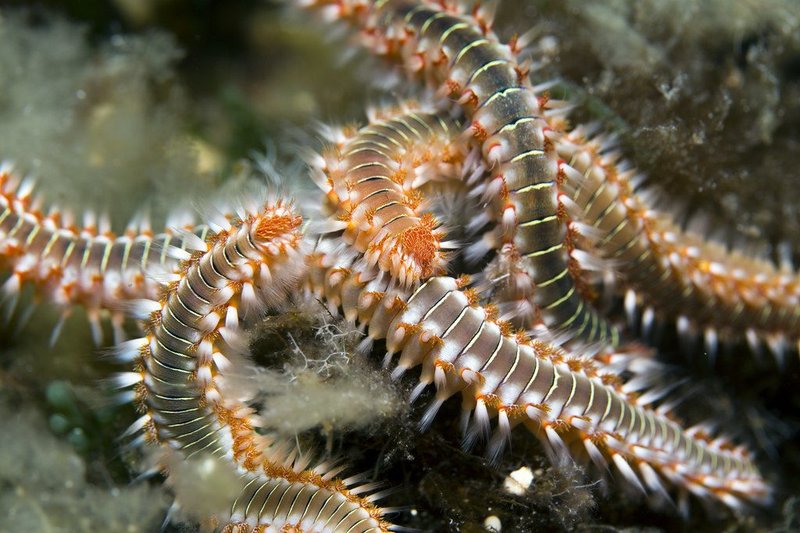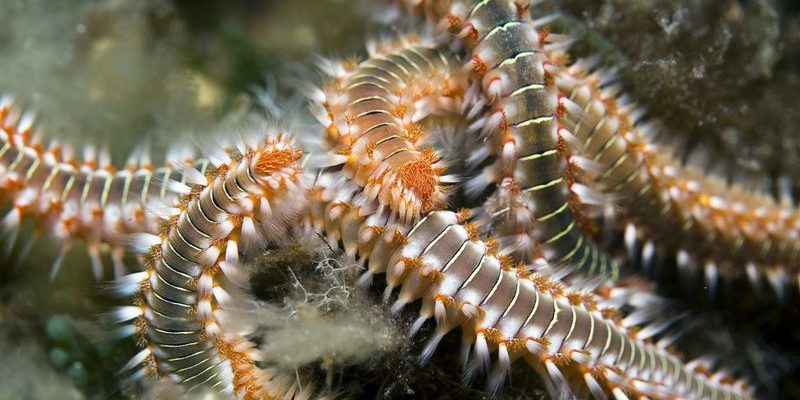
Bristle worms, also known as polychaetes, are quite the mixed bag. While they can be great for your tank’s cleanliness, helping to munch on detritus and leftover food, their sudden multiplication can lead to an overpopulation problem. Think of them like uninvited guests at a party—at first, they seem fine, but soon they turn into a crowd that you can barely manage. So, why do these creatures seem to pop up out of nowhere? Let’s untangle this mystery together.
What Are Bristle Worms?
Bristle worms are segmented worms found in marine environments, often seen in reef tanks. They can vary in color, often appearing reddish or brown, and can grow up to several inches long. One of their most distinguishing features is the bristles that cover their bodies, which are actually tiny hairs (or **chaetae**) used for movement and protection. These worms play an essential role in the ecosystem of your tank, primarily as scavengers.
They’re often considered beneficial because they help break down waste, contributing to the overall health of your aquarium. However, their population can spiral out of control if not monitored. An example that many aquarists can relate to is when they suddenly find their once pristine tank crawling with these little guys. So, what causes this rapid increase in numbers?
Causes of Bristle Worm Overpopulation
Now that we’ve got a handle on what bristle worms are, let’s explore why they can suddenly multiply. The short answer? **Conditions in your aquarium.** Here are a few key factors that can lead to a bristle worm boom:
- Excess Nutrients: Just like us, bristle worms thrive when there’s a buffet of food available. Leftover fish food, decaying matter, or uneaten organic material can create a feast for these worms.
- Water Quality: Poor water conditions can stress your fish and create a more inviting environment for bristle worms. Elevated nitrate levels, for instance, can boost their reproduction rate.
- Low Competition: If there are fewer scavengers in your tank, like certain types of crabs or shrimp, bristle worms may fill that ecological gap, multiplying in the process.
It’s like when a restaurant has a huge sale and only a few people show up; suddenly, it’s a bustling hub of activity! To manage bristle worms effectively, understanding these conditions is key.
Signs of Bristle Worm Infestation
So, how do you know if you’ve crossed the line from a healthy number of bristle worms to an infestation? Here are some signs to watch out for:
- Visible Numbers: If you’re seeing more than a few worms during feeding time or when you’re cleaning the tank, it’s a sign that their population is booming.
- Food Disappearance: Are you finding that your fish food is vanishing too quickly? Bristle worms can gobble up leftovers before your fish get a chance.
- Changes in Tank Parameters: If you notice spikes in nitrates or other pollutants, these changes can signal that your bristle worm population is out of balance.
Basically, if your tank looks like a bristle worm convention, it might be time to take action!
Managing Bristle Worm Populations
Don’t panic just yet! There are ways to regulate the population of bristle worms in your aquarium. Here are a few strategies:
- Reduce Overfeeding: Cut back on the amount of food you’re giving your fish. It’s crucial to find the right balance to avoid leftover food that feeds unwanted guests.
- Increase Competition: Introduce more scavengers like certain types of shrimps or crabs that can compete with bristle worms for food.
- Manual Removal: If the population is becoming a nuisance, you may need to physically remove bristle worms. Use tweezers or gloves to pick them out carefully.
By implementing these changes, you can help restore balance to your aquarium’s ecosystem.
Preventing Future Explosions
It’s much easier to prevent a bristle worm situation than to fix one. Here are some tips to keep your bristle worm population in check:
- Regular Maintenance: Performing regular water changes and cleaning your tank will help keep nutrient levels low.
- Monitor Food Intake: Feed your fish only what they can consume in a few minutes and remove any uneaten food promptly.
- Check Equipment: Ensure your filtration system is working properly to help control any spikes in waste products.
Think of it like regular exercise for your tank—it keeps everything in shape!
When Bristle Worms Aren’t a Threat
It’s worth noting that not all bristle worms are bad news. Some species remain small, and their presence can actually benefit your tank. For instance, if your bristle worms help break down waste without causing issues or harming your fish, they might actually be doing more good than harm.
It’s about striking that balance. If you think you have a beneficial species, it’s important to observe their behavior. If they start becoming overly greedy for food, that’s when you may need to reconsider their numbers.
Bristle worms can be a perplexing topic for many aquarium enthusiasts, especially when they seem to multiply overnight. By understanding \*why\* they thrive and taking proactive measures, you can maintain a healthy balance in your tank. Remember, it’s all about keeping your aquarium’s ecosystem thriving.
So, the next time you spot one of these little worms, don’t fret. Instead, take a moment to assess your tank’s condition and be proactive in managing your critters. With the right care, you can ensure your tank remains a serene environment for both your fish and any bristle worms that call it home.

